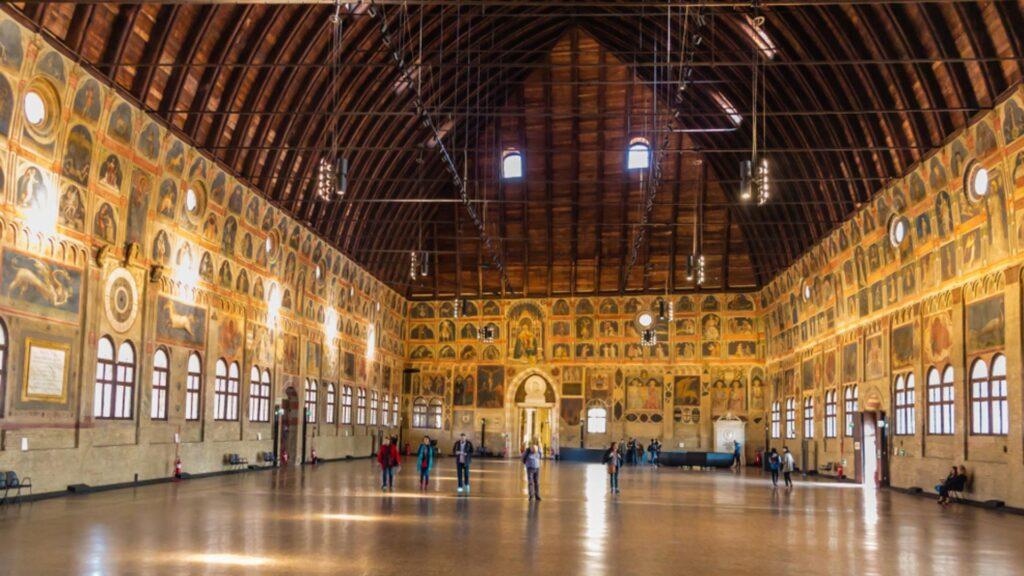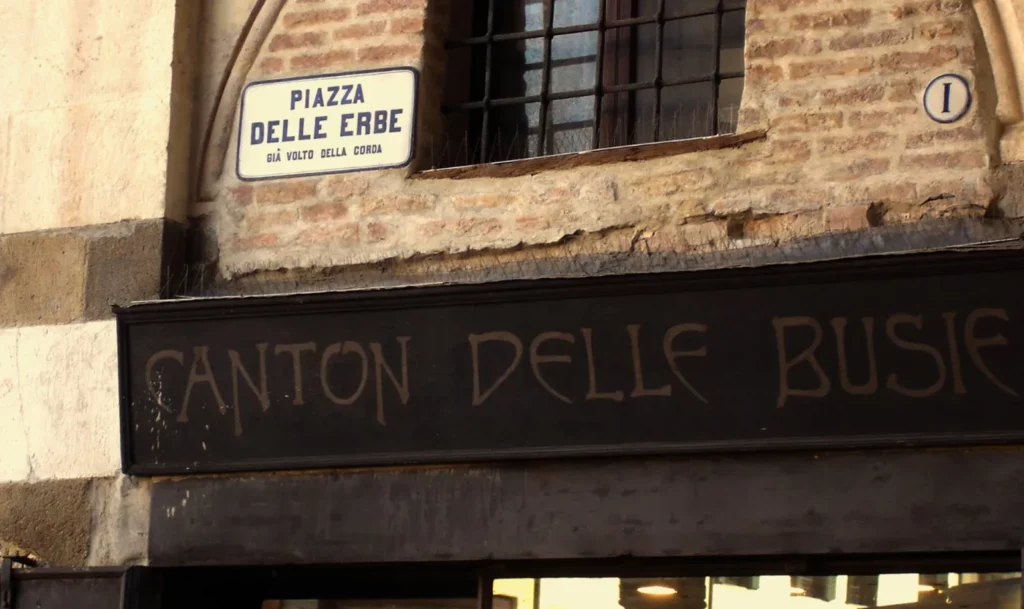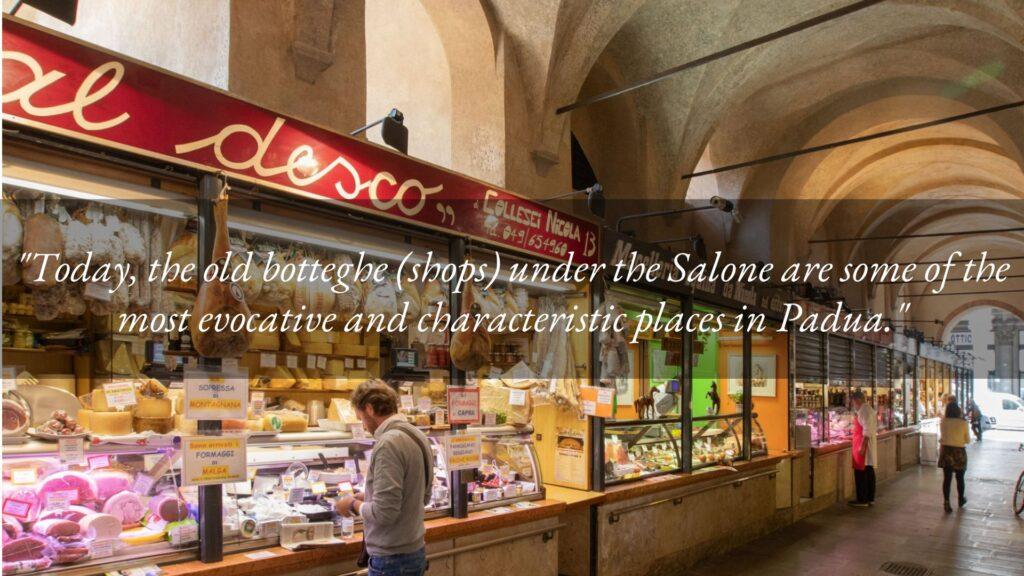
The Palazzo della Ragione and its wonders
A few lines aren’t enough to describe the magnificence of the Palazzo della Ragione in Padua, as there are numerous details, places and objects which still tell its story even today.
The distinctiveness of its frescoes, for example, was cited in the series of articles dedicated to Padova Urbs Picta. The paintings, created by Giotto, were destroyed by fire in 1420. They were later recreated by the Paduan master Nicolò Miretto, by the Ferrara painter Stefano da Ferrara and by other artists. Today, the fresco cycle is one of the very rare medieval astrological cycles which have survived to this day. However, it isn’t the only wonder of this place.
The Salone
Seen from the outside, the Palazzo della Ragione looks like a large upturned boat. The roof is made up of larch wood trusses which rest not on any central column but on ninety pillars, arranged in four ranks. This is why the Salone (Great Hall, or Salon in the Venetian dialect) is a one-of-a-kind “sala pensile” (hanging room). Once used to administer justice, it is now a spectacular space for exhibitions, shows and special events.

The Volto della Corda and the Stone of Shame
The arch between Piazza della Frutta and Piazza delle Erbe, which connects the ancient Palazzo del Consiglio and the eastern part of the Palazzo della Ragione, is called Volto della Corda (Face of Rope), and was built in 1277.
Here you can find the incisions which allowed people to check the quantities and measurements of the goods which traders exchanged in the city. Used as a reference, these incisions allowed any “swindlers” to be unmasked. The corner of the square, the Canton dee busie, or the Corner of Lies, was the very place where these cheats were punished. Anyone who misused the units of measurement was tied to the arch with rope and their properties were auctioned off.
Later, the sentence was softened: the criminals were forced to expose themselves in their shirt and underwear on the “Pietra del Vituperio” (Stone of Shame), a porphyry seat located in the Palazzo della Ragione. Placed on this stone, they had to repeat the phrase “cedo bonis” (I give up my possessions) three times in front of at least one hundred people, and then leave the city, in exile. The Pietra del Vituperio is still visible today inside the hall of the palace.

The botteghe
Today, the old botteghe (shops) under the Salone are some of the most evocative and characteristic places in Padua. Each shop offers very high-quality food products: cheeses, meats, sausages and fish, first and foremost.
Then there are also typical local products and gastronomic novelties which are part of all that good and genuine food which is typical of Veneto and its traditions: delights which guests of the Hotel Tritone absolutely cannot miss out on.

The Underground of the Salone
The foundations of the Salone were excavated in the 1990s for technical reasons, and revealed an incredible layering of historical materials from the medieval era and even dating back to the Roman Empire. Visits to the underground area are only possible with the accompaniment of a specialised guide.
The external spaces of the Palazzo della Ragione can be visited for free during the day, while visits to the actual Salone and the underground area are subject to a fee. Our reception staff will be able to give you all the information about this.
To visit the Palazzo della Ragione you can book your next trip to Padua and your stay at the Hotel Tritone at the same time, by writing to us here or calling (+39) 049 8668099
